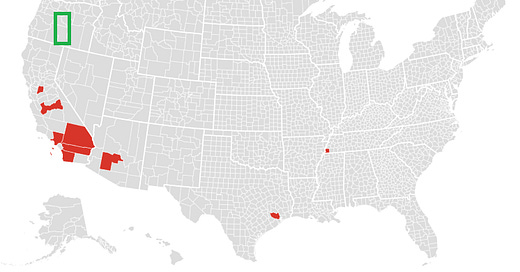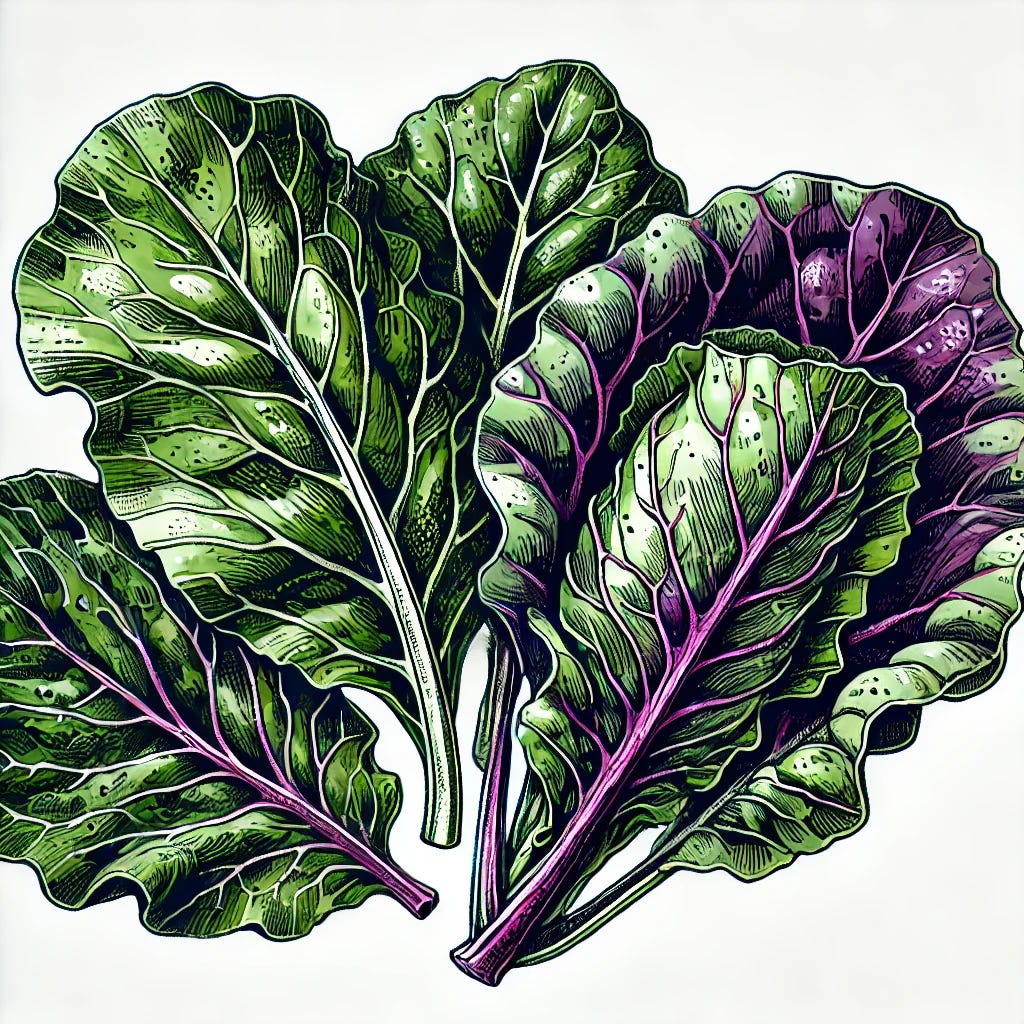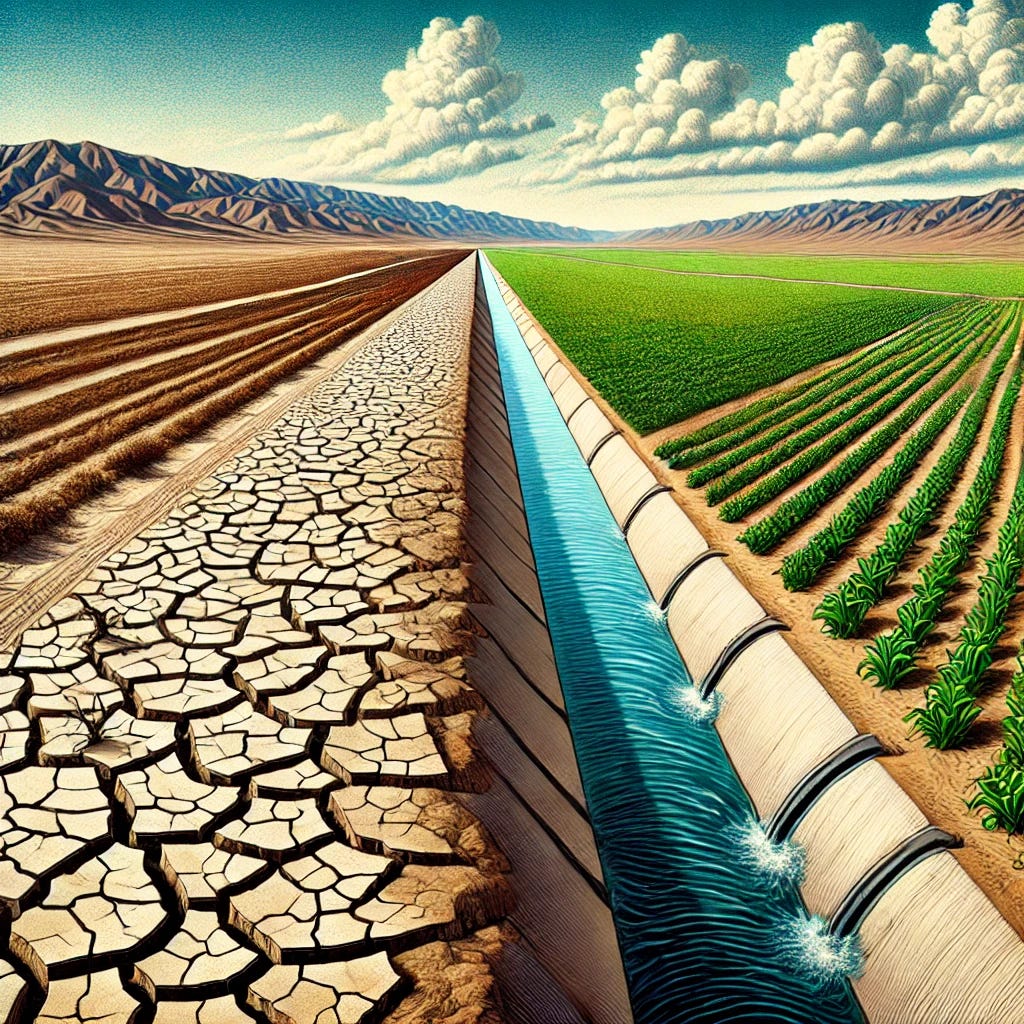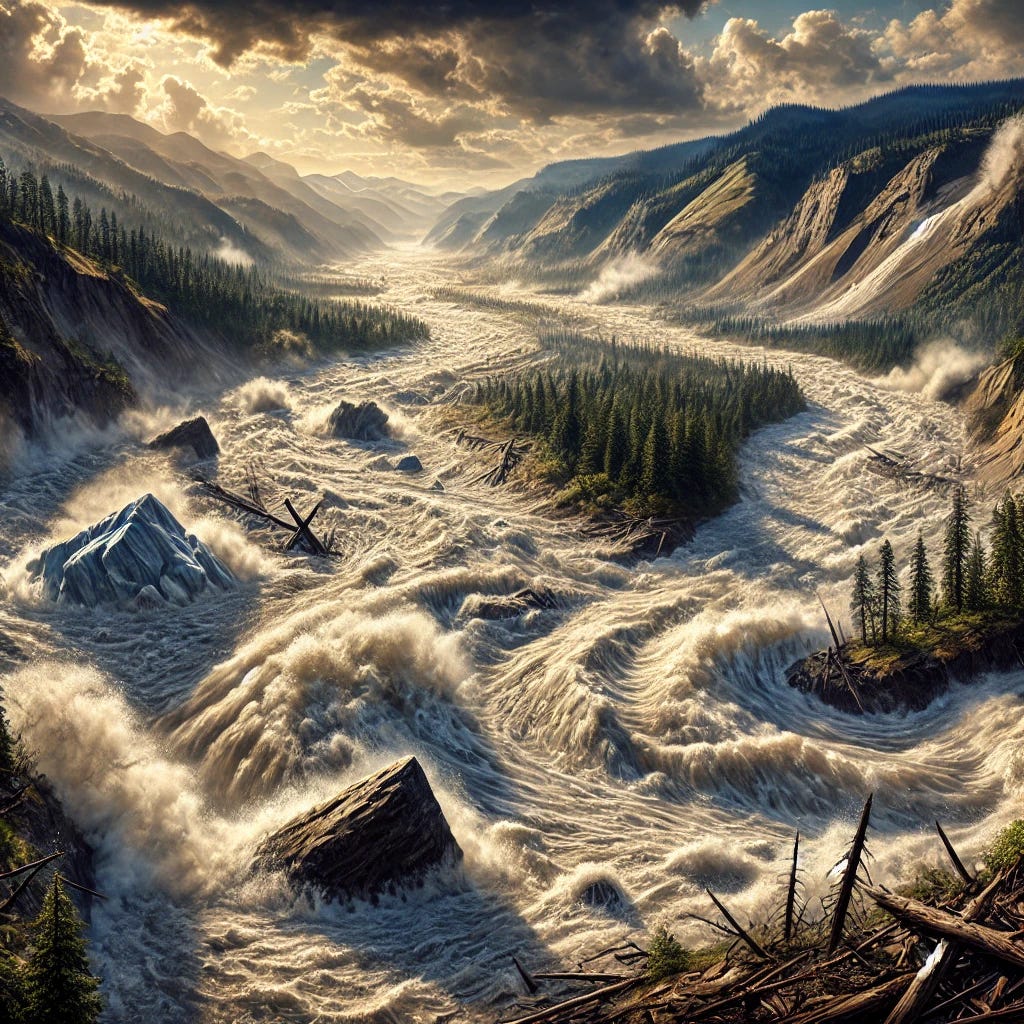Imperial Valley CA
The Imperial Valley in Southern California is a critical hub for U.S. agriculture, particularly during the winter months. Despite receiving less than three inches of annual rainfall, the valley's fertile lands are sustained entirely by water diverted from the Colorado River via the All-American Canal. This irrigation enables the Imperial Valley to produce approximately two-thirds of the nation's winter vegetables, including lettuce, broccoli, and carrots. We will return to the winter vegetables subject soon, the first question is where are most of the #seeds needed to grow these vegetables coming from?
Seed Sources
The seeds used to grow food in the Imperial Valley come from a combination of local and global sources, with seed companies, cooperatives, and individual farmers playing key roles in their procurement. Here’s an overview of where these seeds typically come from:
1. Commercial Seed Companies
Domestic Suppliers: Many seeds are sourced from U.S.-based seed companies specializing in high-yield, drought-tolerant, and pest-resistant varieties. Companies like Monsanto (Bayer Crop Science), Syngenta, and Corteva Agriscience provide a significant portion of the seeds for large-scale agriculture. We have found that there is a blurring between organic standards and GMO seeds and these names sound familiar. In addition, none of these companies started life as seed companies. We covered the hijacking of our seed supplies in this article.
Specialty Seed Companies: Smaller seed companies such as Johnny's Selected Seeds, Peaceful Valley Farm Supply, or regionally-focused suppliers provide seeds for niche crops and organic farming practices. There are some great presentations on seed suppliers and the seed system from Dan Kittredge in this piece we created.
2. Global Seed Networks
International Seed Companies: Some seeds come from global suppliers due to their expertise in specific crops. For instance, hybrid lettuce seeds or varieties adapted for arid climates might originate from Europe or Israel, where similar environmental conditions prevail. One item we feel fairly strongly about is the aspect of hydroponics having USDA’s Organics Standards applied. We feel that Organic Produce should be grown in soils only.
Seed Banks: Seeds for rare or unique crops are occasionally sourced from global seed banks, such as the International Center for Agricultural Research in the Dry Areas (ICARDA) or the Svalbard Global Seed Vault.
3. Local Seed Production
On-Farm Seed Saving: Some farmers in the Imperial Valley save seeds from previous harvests, particularly for non-hybrid crops, to reduce costs and ensure compatibility with local soil and climate conditions. This is by far the most powerful methodology with local resilience fully in mind.
Local Seed Cooperatives: Regional seed-saving groups and cooperatives, though less common in large-scale industrial farming, contribute to the availability of heirloom and open-pollinated seeds.
4. Research and Development
University Programs: Institutions like the University of California Agriculture and Natural Resources (UCANR) develop seed varieties tailored for the region’s unique climate and soil.
Private R&D: Many commercial seeds are hybrids developed through research programs aimed at increasing yields, disease resistance, and resilience to the region’s arid conditions.
5. Government Programs
USDA Partnerships: The USDA Agricultural Research Service (ARS) supports research into crop varieties suited for arid and semi-arid farming, contributing to seed availability in the Imperial Valley.
6. Imported Seeds
Vegetables like Lettuce and Broccoli: Seeds for lettuce, broccoli, and other vegetables are often hybrids specifically bred for high yields and uniformity. Many of these seeds come from suppliers in countries known for agricultural innovation, such as the Netherlands and Japan. This uniformity is costing us billions of dollars in wasted food which is perfectly fine to eat. Perfectly aesthetic fresh food is not normal. We wrote about these aspects in this piece.
The seeds used in the Imperial Valley reflect the industrial nature of agriculture in the region, with a strong emphasis on maximizing productivity in challenging environmental conditions. Let’s cover some of these “challenging environmental conditions”, next.
Challenging Ecological Conditions
The Colorado River is facing significant challenges due to prolonged drought and increasing demand. The river's flow has diminished, impacting the water supply for the Imperial Valley's extensive agricultural activities. Farmers in the region are expressing concerns about the potential effects on crop diversity and pest management, which could have broader implications for the US national food supply.
In response to these challenges, the Imperial Irrigation District (IID) is collaborating with farmers to implement water conservation measures. These initiatives include the adoption of advanced irrigation technologies such as drip and sprinkler systems, as well as precision laser leveling of fields to enhance water use efficiency. Despite these efforts, the cost of implementing such technologies remains a concern for many farmers.
The current water usage agreement among the seven states that rely on the Colorado River, along with Mexico, is set to expire in 2026. If a new consensus on water allocation is not reached by then, the Bureau of Reclamation may need to intervene to establish usage guidelines. This situation underscores the urgency for collaborative solutions to ensure the sustainability of the Colorado River and the agricultural economies it supports. We cannot ignore the fact that, currently, The Colorado River flow is diminishing. The Bureau of Reclamation cannot do much, if anything, to increase the Colorado River flows.
The challenges facing the Colorado River and the Imperial Valley highlight the complex interplay between water resources and agriculture in arid regions. Addressing these issues is crucial not only for local economies but also for maintaining the stability of the nation's food supply.
Impacts On Food Supply Of Imperial Valley Soils
The Imperial Valley's soil quality has been extensively studied due to its significance in agriculture and environmental health. Key findings from various studies include:
Soil Composition and Classification
The region's soils are primarily fine-textured, calcareous, and inherently saline, necessitating effective irrigation and drainage management to maintain agricultural productivity. A comprehensive soil survey by the Natural Resources Conservation Service (NRCS) provides detailed classifications and characteristics of these soils.
Salinity Management
Managing soil salinity is crucial in the Imperial Valley. Research has focused on salt and water balance, emphasizing the importance of leaching practices, irrigation management, and drainage systems to prevent salt accumulation in the root zone. A study on salt balance highlighted the need for continuous monitoring and management to sustain crop yields.
Nitrogen Oxide Emissions
Recent studies have identified unusually high soil nitrogen oxide (NOx) emissions in the Imperial Valley, which significantly influence air quality. These emissions are linked to fertilization practices and high temperatures, underscoring the need for improved management strategies to mitigate environmental impacts.
Agricultural Runoff and Environmental Impact
The effects of agricultural practices on soil and water quality have been examined, particularly concerning runoff into the Salton Sea. Research comparing organic and conventional farming methods has provided insights into nutrient leaching and its environmental consequences, highlighting the importance of sustainable farming practices to protect regional ecosystems.
Way Up North - The Willamette Valley
The Missoula Floods, also known as the Spokane Floods, were a series of cataclysmic floods that occurred at the end of the last Ice Age, around 15,000 to 13,000 years ago. These floods significantly shaped the landscape of the Pacific Northwest, including the Willamette Valley in Oregon. Here are some insights into their impact:
What Were the Missoula Floods?
Origins: The floods were caused by the periodic failure of an ice dam on the Clark Fork River in present-day Montana. This dam held back a massive glacial lake, Glacial Lake Missoula, which was roughly the size of Lake Erie and Lake Ontario combined.
Flood Events: When the ice dam broke, an estimated 500 cubic miles of water were released in a matter of days, rushing across the landscape at speeds of up to 60 miles per hour. This process occurred multiple times over several thousand years.
Impact on the Willamette Valley
Deposition of Fertile Soil:
The floods carried vast amounts of sediment from eastern Washington and Idaho into the Willamette Valley.
As the floodwaters slowed, they deposited layers of nutrient-rich silt, creating some of the most fertile agricultural land in the world.
This fertile soil contributes to the valley's reputation as a prime location for farming, including grass seed production, hazelnuts, and a growing wine industry.
Formation of Geologic Features:
The floods carved out distinct features such as the Columbia River Gorge.
The Willamette Valley became a large temporary lake during each flood, with floodwaters sometimes reaching depths of 400 feet.
The valley’s flat floor and fertile soil are direct results of these events.
Legacy on Ecosystems:
The diverse ecosystems of the Willamette Valley owe much to the deposits and changes caused by the floods.
Wetlands and floodplains in the valley were formed, providing habitats for a wide range of species.
Human History and Settlement:
The fertile soil laid the foundation for agriculture, making the Willamette Valley a hub for Native American communities before European settlement.
In modern times, the valley became the "Land of Milk and Honey" for settlers on the Oregon Trail.
Key Features Left by the Floods
Erratics and Ice-Rafted Boulders: Large rocks carried by icebergs that floated in the floodwaters were deposited throughout the region. Some erratics in the Willamette Valley came from as far away as Canada.
Scablands: The floods created rugged terrain in eastern Washington, known as the Channeled Scablands, which funnelled water into the Columbia River and down into the Willamette Valley.
Flood Layering: Geologic layers in the valley reveal the sequence of floods, with distinct sediment deposits marking each event.
Modern Implications
Agricultural Richness: The legacy of the floods is still evident in the valley’s productivity, supporting crops like hops, berries, hazelnuts, and wine grapes.
Geologic Research: The Missoula Floods are a focal point for understanding catastrophic geological processes and their long-term effects.
Climate and Flooding Awareness: These events remind us of the power of natural forces and the importance of understanding regional flood risks, particularly as climate change impacts weather patterns.
The Missoula Floods profoundly shaped the Willamette Valley, leaving behind a landscape that continues to influence agriculture, ecosystems, and human settlement. They remain a cornerstone of geologic and environmental history in the Pacific Northwest.
Conclusion
The breadbasket of the USA is still mainly California; given enough hydration, it is still an amazing growing area, particularly in Winter Fresh Food. However, challenges are mounting, so it is fortuitous that we have another great growing area just to the North
This is a really great article from Dan Armstrong on the history and promise of the Willamette Valley.
Thank you as always for reading this.







